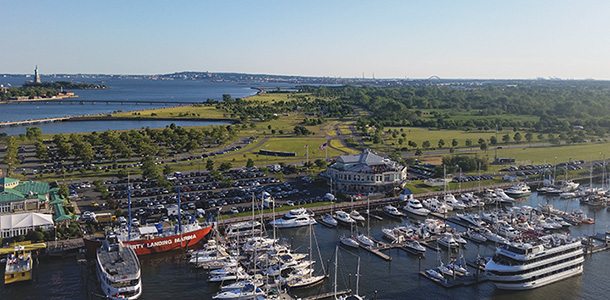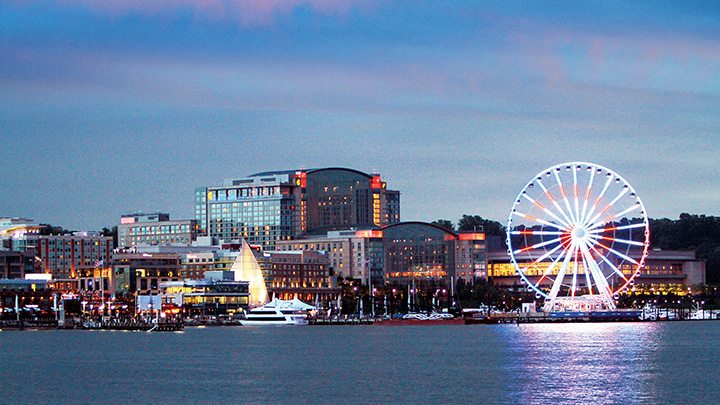The changing marina climate

Consolidation, innovation coming to marina segment
A recent wave of consolidation in the marina segment has the potential to drastically reshape how and where boaters spend their time on the water.
For an industry that has been dominated for decades by small, family-run operations, it’s a dramatically different look. Major, well-financed players have jumped into the segment in a big way – and there’s no reason to think that will change.
The availability of capital, along with the aging of many Baby Boomer marina owners, has created an unprecedented opportunity for investment and growth.
“Those two factors coming together have allowed it to be a good time for us to grow and build a business that lots have talked about, but nobody’s ever accomplished on an institutional scale,” said Bryan Redmond, founding principal and head of acquisitions for Suntex Marinas. “Marinas historically have been generational assets, passed along generation to generation. For whatever reason in the marketplace there seems to be an opportunity where a lot of the owners, typically in their 60s or 70s, and for whatever reason, do not have family members they’re looking to hand those to. They’d rather convert that to cash and put that into the marketplace rather than just having one hard asset.”

As of the end of 2016, Suntex owned 26 marinas and operated another five. The company has ambitious goals for 2017, planning to add another 20 to 25 marinas this year, Redmond said.
The majority of that growth will be in Florida, the West Coast and in the Northeast, in both coastal and inland lake locations.
Suntex plans “to effectively double in size” in 2017, Redmond said. “We have the plans and the capital to achieve that and show that consistent growth through 2018 and 2019 through acquisitions and investing back in our assets.”
IGY Marinas, which currently has a portfolio of 15 marinas focused on the yacht segment, is also seeing the opportunity to grow.
“There is definitely an uptick in consolidation within the industry today in the United States as several players have raised funds for this specific purpose,” said Tom Mukamal, CEO of IGY Marinas. “We continue to be in a very low-yield environment. Additionally, traditional real estate has gotten quite expensive. So, marinas can, under the right circumstances, be purchased at attractive pricing and provide good cash flows when compared to traditional real estate.”
IGY, which has a large international presence, recently added its first South Florida location: One Island Park, located on Miami Beach’s Terminal Island.
“Miami is one of the leading luxury yachting destinations in the United States, making this a significant achievement for our targeted growth strategy in Florida,” Mukamal said.
The other big player making noise in the marina market these days is Safe Harbor. The company made its public debut at the 2016 International Marina and Boatyard Conference with a portfolio of 31 marinas in 12 states. Now with 36 locations in 14 states, the company bills itself as the largest owner and operator of marinas in the United States.
Safe Harbor declined to be interviewed for this article, but in an interview last fall, CEO Marshall Funk said the company plans to continue its careful growth in 2017.
Like Suntex and IGY, Safe Harbor cited the fresh availability of capital as the key to this consolidation wave.
“The problem has always been the ability to attract capital because marinas are such a little business,” Funk said. “It’s been very difficult to raise the cash to do it on a large scale.”

For current owners, Safe Harbor says the trend can help them plan their exit strategy.
“On the seller side, it’s a good time to sell right now,” Funk said. “We have an attractive portion of our partnership that allows someone to leave part of their equity in and watch their asset appreciate along with our assets going up.”
Economies of scale
One of the major drivers for this new wave of consolidated ownership is the opportunity to find new, efficient ways to run a large marina operation. The large players are just reaching the size where those opportunities can be realized.
“Nobody has ever truly built to a true institutional scale,” Redmond said. “There have been smaller efforts, but nobody’s gotten to $1 billion in assets.”
Suntex is already seeing the benefits on a regional basis.
“If you have a team in place, you can leverage those regional managers and the people executing the business plan,” Redmond said. “As long as they’re in a close enough relationship that they can be there once a week, you can realize those economies of scale.”
The company hasn’t yet achieved those economies of scale at the home office level, but Suntex does expect to reap those benefits as it implements new systems and continues to grow in 2017.
“We really look at our home office as a support system to our people out in the field,” Redmond said. “It’s not our people who report to us, it’s really the reverse, is how we try to operate.”
For customers, the ultimate benefit of consolidation should be a better experience.
“Larger players should have better access to capital to improve asset quality and services,” said Mukamal. “At IGY, we have continued to invest in our portfolio of 15 marina destinations and in our people in order to increase the value proposition for our clientele. … We see value in training our staff, enhancing our facilities, and catering to the requests of our guests which all attribute to the capital used to maintain the standards our visitors appreciate.”

Thousands of boaters leave the sport every year. Building the right boats (at the right price point) is important, but in the end the ease or hassles of boating is what makes or breaks someone’s experience.
“I feel the boat manufacturers have done a great job of evolving and meeting market demand,” Redmond said. “In the marina space, we have a lot of the same marinas sitting the way they were built in the ‘60s, ‘70s or ‘80s, where the facility has not had capital invested into it to meet the demand for amenities. We’re trying to upgrade our facilities to meet the demand and be consistent with where the boat manufacturers are.”
Not only should boaters be able to get the accessories, parts and service operations they need, but also somewhere to have a meal or drink while relaxing with friends or family.
“We’re selling an experience,” Redmond said. “A marina is just the physical asset that allows that experience to occur. We try to make that as hassle-free as possible for the customer and we believe that in the long run that is what the customer is looking for.”
Finding the right fit
While there are thousands of marinas across North America, the vast majority aren’t obvious targets for acquisition.
They need to be a big enough operation to justify investment, while at the same time having key staff that can help make the transition and a prime location that has growth potential.
For Suntex to enter a new market – whether inland or coastal – it needs to find what it calls a “centerpiece” marina. That’s a facility that has at least $2 million a year in earnings, with more than $4 million in revenue – and a team Suntex can build around.
“Once we’re established in a region we’re able to leverage those team members that we have to execute the business plan [and] buy some smaller assets around them doing $1 million in earnings or more,” Redmond said. “We’ve found that it’s tough for us to work with marinas that are doing less than that … those are designed to be family-owned and operated.”
Safe Harbor also wants substantial operations, especially those that can drive significant passive revenue through storage and slip rental. The company has mostly focused on coastal operations to this point, but likes to find multiple marinas in a geographic area in order to realize the best synergies.
Suntex also looks for a location that can not only support storage, rental and maintenance operations, but hospitality options as well.
“Maybe it’s not operated that way today, but the existing assets would allow us to come in and bring the way we want to operate a ‘Suntex marina,’ where it’s really a one-stop shop for our customers, where they can have a great experience where they’re being taken care of and enjoying their experience,” he said.
IGY, on the other hand, is more selective, with a narrower focus on deep salt water marinas which can accommodate the larger yachts of its existing customer base.
“IGY’s portfolio includes 300 berths specifically designed for megayachts, making large-scale vessels a major factor in our strategy for marina acquisitions,” Mukamal said. “We also take a close look at other elements, including where the interest lies with industry influencers, such as captains and charter companies, existing amenities and services available, quality of in-water infrastructure, depth and upland real property values, as well as the regulatory and legal regime of the location of the marina.”




